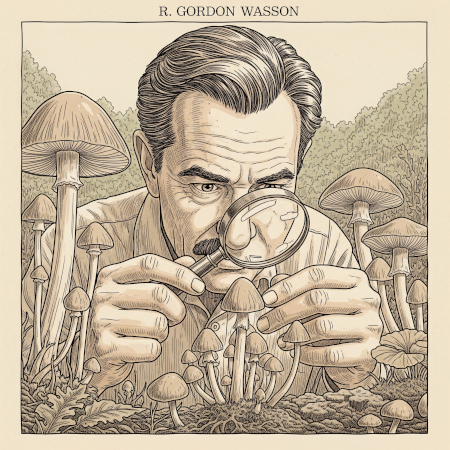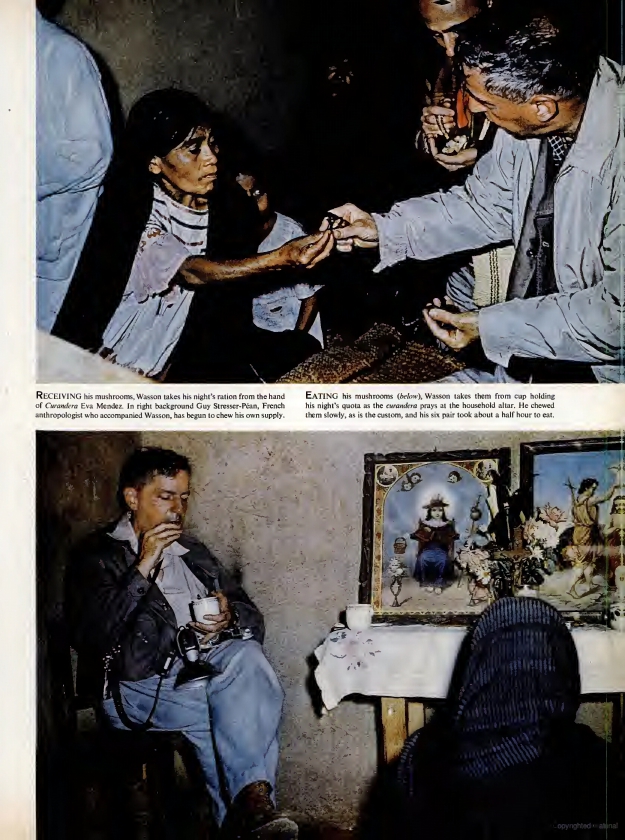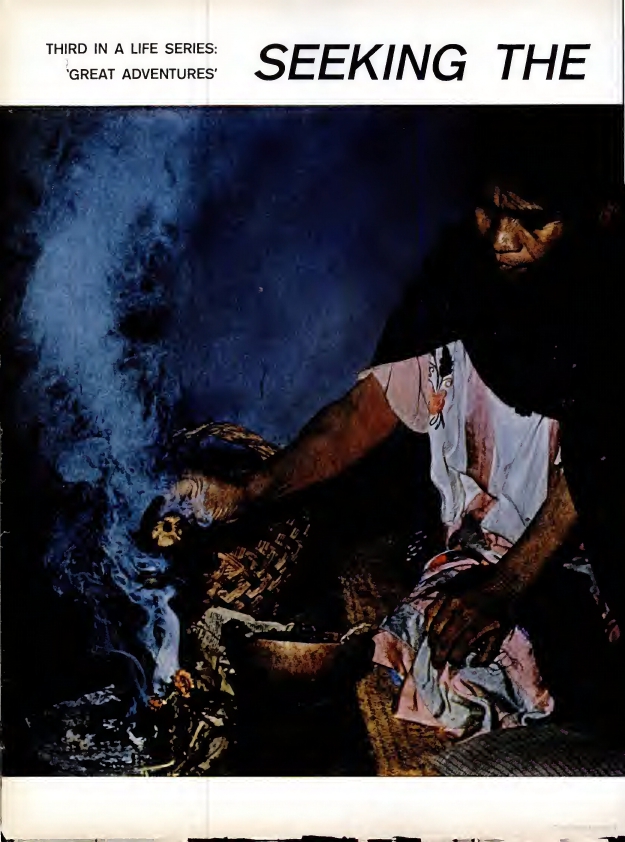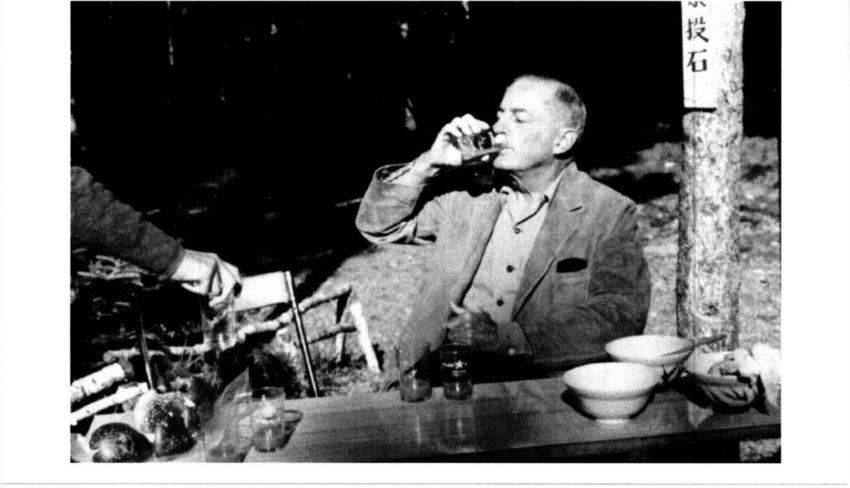Gordon Wasson and psychedelic mushrooms
- Who was R. Gordon Wasson?
- The awakening of Wasson's interest in mushrooms
- Wasson's search for sacred mushrooms
- The journey to Huautla de Jiménez, 1955
- The article "Seeking the Magic Mushroom"
- Wasson's relationship with María Sabina
- Wasson's scientific and academic contributions
- The foundation of ethnomycology
- The soma theory
- Wasson's complex legacy: light and shadow
- References
The history of modern psychedelia has a very clear turning point: May 13, 1957, when Life magazine published an article that would change the world forever. Its author, R. Gordon Wasson, was not a hippie or a rebel scientist, but a respectable Wall Street banker who would become the father of modern ethnomycology and the person responsible for introducing psychedelic mushrooms to Western culture.
Who was R. Gordon Wasson?
Robert Gordon Wasson (1898-1986) was an ethnomycologist, banker, and American writer whose pioneering work established the scientific foundations for the study of mushrooms in human cultures. Born in Great Falls, Montana, Wasson developed a successful career in New York's financial world, working for J.P. Morgan & Co. for over 30 years. However, his true passion and legacy lay in a completely different field: the study of mushrooms and their role in human history.

What makes Wasson's figure extraordinary is how a conventional businessman became the most influential researcher in the field of psychedelics, opening the doors to decades of scientific research and, inadvertently, fueling the counterculture movement of the 1960s.
The awakening of Wasson's interest in mushrooms
Wasson's transformation began in the most unexpected way. During his honeymoon in 1927 in New York's Catskill Mountains, his Russian wife Valentina Pavlovna Wasson recognized and collected wild mushrooms to prepare a meal. Wasson, raised in the Anglo-Saxon tradition of distrust toward wild mushrooms, watched in horror as his wife consumed what he considered potentially poisonous.
This fundamental cultural difference awakened in Wasson an intellectual curiosity that would consume him for the rest of his life. He realized that there were "mycophilic" cultures (that love mushrooms) like the Russian one, and "mycophobic" cultures (that fear mushrooms) like the Anglo-Saxon one. This observation led him to wonder: what role had mushrooms played in the evolution of human cultures?
Wasson's search for sacred mushrooms
During the following decades, Wasson embarked on exhaustive research on the role of mushrooms in different cultures. Along with his wife, he published studies on mycological folklore in Russia and other European countries. However, his interest intensified when he began to find references to sacred mushrooms in ancient texts and indigenous cultures.
Rumors about mushroom ceremonies in Mexico particularly intrigued him. Through academic contacts and meticulous research, Wasson traced references to the "divine mushrooms" used by the indigenous peoples of Oaxaca.
The journey to Huautla de Jiménez, 1955
On June 29, 1955, Wasson made the journey that would make him a historical figure. Accompanied by photographer Allan Richardson, he traveled to Huautla de Jiménez, a remote Mazatec village in the mountains of Oaxaca, Mexico. There he met María Sabina Magdalena García, a 58-year-old Mazatec curandera who would become one of the most important figures in the history of psychedelia.
After gaining her trust and demonstrating respect for local traditions, María Sabina agreed to include Wasson in a nocturnal ceremony of sacred mushrooms. The experience was transformative. Wasson consumed Psilocybe mexicana and experienced intense visions that he described as "more real than ordinary reality".

He became the first documented Westerner to participate in a traditional psychedelic mushroom ceremony, a fact that he himself recognized as an extraordinary honor.
The article "Seeking the Magic Mushroom"
Two years after his experience in Huautla, Wasson published his findings in a 15-page article in Life magazine titled "Seeking the Magic Mushroom". Published on May 13, 1957, this article introduced psychedelic mushrooms to the American and Western public for the first time. The article included shocking photographs of the ceremonies, detailed descriptions of the mushrooms' effects, and a careful explanation of the cultural and religious context of their use.
Wasson wrote: "For the first time the word of a white man describes the sacred mushrooms of Mexico... We have come from afar to find what man has sought since the beginning of time: a panacea, a magic plant, a potion that for soul and body would be what the ancients called nepenthe, which would make one forget the pain of the world."

The response was immediate and massive. Thousands of letters arrived at Life offices from readers fascinated by the story. More significantly, the article reached the hands of figures who would shape the future of psychedelic research:
- Albert Hofmann, the Swiss chemist who had discovered LSD, read the article and subsequently traveled to Mexico with Wasson to study the mushrooms
- Timothy Leary was inspired by Wasson's work to begin his own experiments
- Researchers from around the world began studying the psychoactive compounds in mushrooms
Wasson's relationship with María Sabina
The relationship between Wasson and María Sabina represents one of the most significant encounters between Western culture and indigenous traditions in the 20th century. Wasson maintained profound respect for María Sabina and Mazatec traditions, learning some words in Mazatec and scrupulously following ceremonial protocols. However, this encounter also illustrates the complexities of cultural appropriation. Although Wasson acted with the best intentions, the publication of his experiences had devastating consequences for the Mazatec community that he so respected.
María Sabina would later reflect: "Before Wasson, nobody took the sacred children just to find God. They were always taken to cure illness... Now people from everywhere come... The wisdom of generations has been lost."
Wasson's scientific and academic contributions
The foundation of ethnomycology
Wasson coined the term "ethnomycology" to describe the study of mushrooms in human cultures. His work established this discipline as a legitimate academic field, combining anthropology, botany, chemistry, and religious studies.
His most important scientific contributions include:
- Mushrooms, Russia and History (1957): A monumental two-volume work that documents the role of mushrooms in the folklore and culture of different societies.
- Species identification: Working with professional mycologists, Wasson helped identify and classify various species of psychoactive mushrooms, particularly from the Psilocybe genus.
- Cultural documentation: His detailed records of Mazatec ceremonial practices provided crucial anthropological context for understanding the traditional use of psychedelics.
The soma theory
In 1968, the ethnobotanist formulated a controversial hypothesis: the mysterious soma described in ancient Vedic texts was not a lost plant, but the mushroom Amanita muscaria, known for its distinctive red cap with white spots. In his work "Soma: Divine Mushroom of Immortality", he proposed that this mushroom was the source of the sacred sacrament that, according to the Rig Veda, granted visions, strength, and direct connection with the divine.

Wasson supported his proposal with several elements:
- Ethnobotany: He documented the shamanic use of Amanita muscaria among Siberian peoples.
- Linguistics: He worked with Sanskrit experts to correlate descriptions of soma with the mushroom's properties.
- Geography: He argued that the mushroom grew in regions where Vedic culture developed.
One of the main criticisms of Wasson's theory was the complexity of the Vedic method of soma preparation. However, modern studies based on hundreds of documented cases demonstrated that these techniques reduced the toxicity of Amanita muscaria and enhanced its visionary effects, which supports the idea that ancient Vedic sages knew how to prepare the mushroom safely and effectively.
Wasson's complex legacy: light and shadow
Wasson's work had profoundly positive impacts:
- Scientific research: His discoveries led to decades of medical research on psilocybin, which today shows extraordinary promise for treating depression, PTSD, and other mental conditions.
- Cultural preservation: He documented indigenous traditions that might otherwise have been lost.
- Academic awareness: He elevated the study of psychedelics from marginality to academic respectability.
On the other hand, Wasson's revelation also had negative consequences:
- Psychedelic tourism: The Life article triggered an avalanche of Western seekers who traveled to Huautla, deeply disturbing the Mazatec community.
- Commercialization: Sacred mushrooms were commercialized and trivialized, losing their sacred ceremonial context.
- Impact on María Sabina: The curandera who had trusted Wasson later regretted having shared ancestral secrets, saying that the mushrooms had lost their power due to foreign profanation.
Although Wasson was a cultural and political conservative, his work inadvertently fueled the psychedelic revolution of the 1960s. Figures like Timothy Leary explicitly cited Wasson's work as inspiration for their own experiments. Ironically, Wasson distanced himself from the counterculture movement he had helped create, concerned about the recreational and contextless use of substances he considered sacred.
In Wasson's own words: "What is there in these mushrooms that gives them the power to transport man outside himself, beyond time and space, to a spiritual dimension unknown to him in his daily life?"
Wasson's story offers key lessons for the current psychedelic renaissance: psychedelics are not simple chemical substances, but tools loaded with cultural meaning; researchers must act with ethical responsibility, considering the impact of their discoveries; and it is essential to recognize and protect the indigenous traditions that have preserved this ancestral knowledge.
References
- Jstor - The Nice Married Couple Who Inspired People to 'Shroom
- Wasson, R.G. (1957). "Seeking the Magic Mushroom". Life Magazine
- Wasson, R.G. & Wasson, V.P. (1957). Mushrooms, Russia and History
- Wasson, R.G. (1968). Soma: Divine Mushroom of Immortality
- Letcher, Andy (2006). Shroom: A Cultural History of the Magic Mushroom Ott, Jonathan (1993).
- Pharmacotheon: Entheogenic Drugs, Their Plant Sources and History
- Researchgate - Revisiting Wasson's
- Pollan, Michael (2018). How to Change Your Mind
- Iceers - Amanita muscaria: Basic Info
- Soma: Exploring the Effects of Preparation on the Chemistry of Amanita Muscaria




















